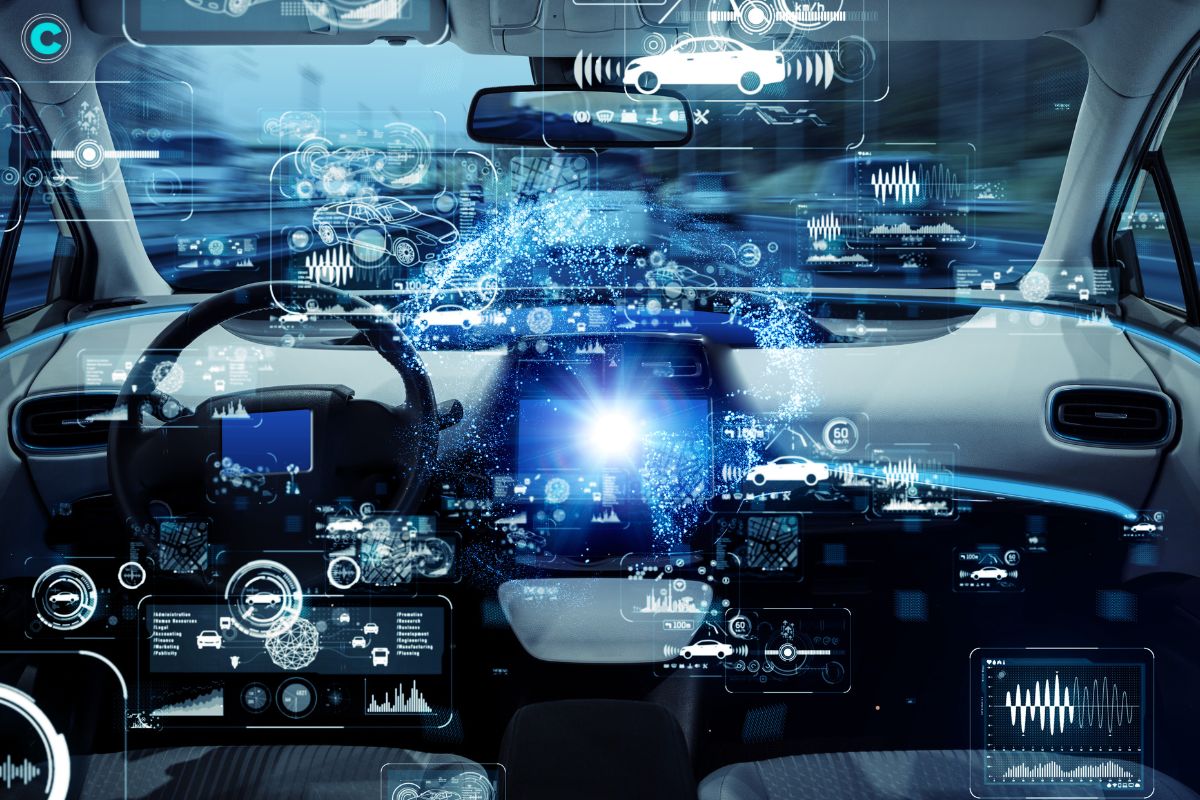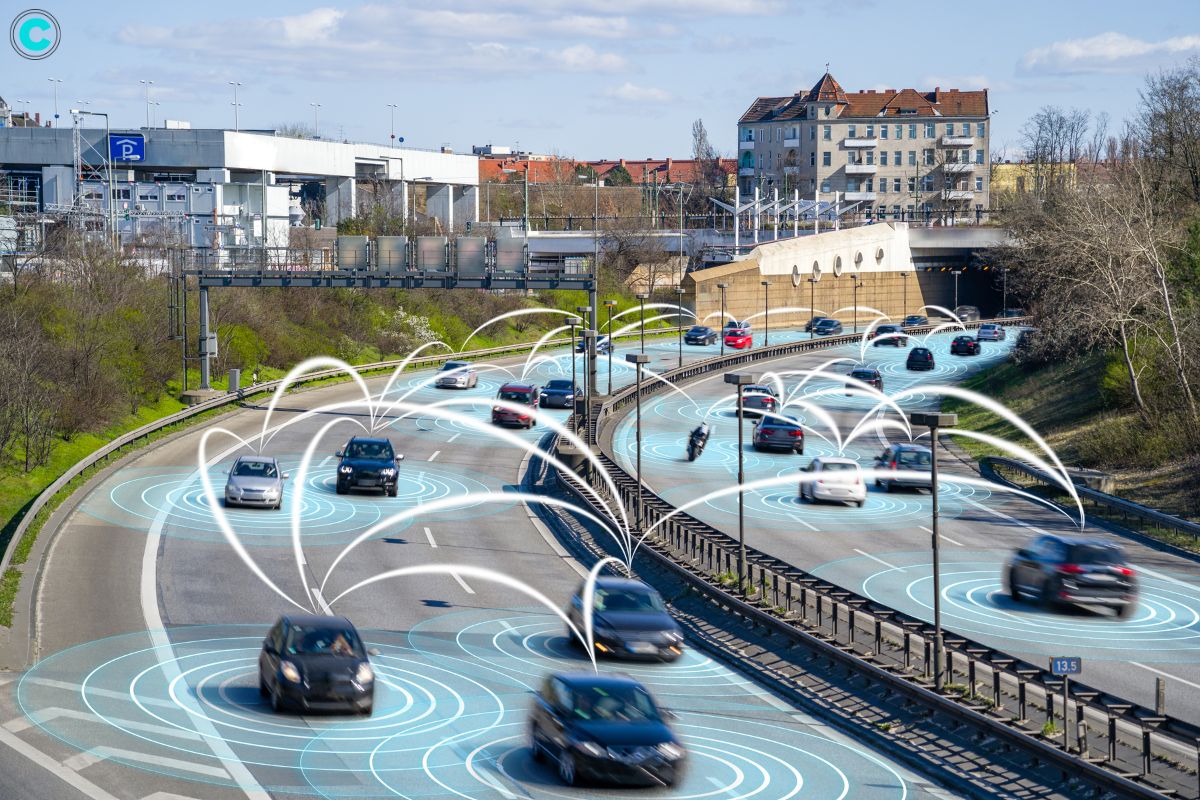The way we think about cars is changing. Imagine vehicles that can do more than just drive—they can communicate with each other, know the road conditions ahead of time, and even drive themselves. These are connected cars, and they’re transforming the auto industry like never before. By using advanced technologies and internet connections, these cars are making driving safer, more convenient, and more efficient. They’re not just machines anymore; they’re smart devices on wheels, ushering in a new era of mobility and innovation.
Connected cars are here to stay, and they’re set to revolutionize how we get around and interact with our vehicles. Let’s explore how these technological marvels are reshaping the automotive landscape and what it means for the future of transportation.
What are Connected Cars?
These are automobiles embedded with internet connectivity and sophisticated software, enabling them to communicate with other vehicles, infrastructure, and external services. This connectivity allows for a wide array of functionalities that extend beyond traditional transportation, enhancing safety, convenience, and efficiency.
The Evolution of Connected Car Technology

1. Early Developments in Telematics
The journey towards these cars began with the introduction of telematics, which facilitated basic communication between vehicles and external servers. Initially focused on functionalities like GPS navigation and vehicle diagnostics, telematics laid the foundation for more advanced connectivity solutions.
2. Integration of IoT and Connectivity
The integration of Internet of Things (IoT) technologies marked a significant leap forward in connected car evolution. IoT enabled seamless connectivity between vehicles, smart devices, and cloud-based platforms, fostering real-time data exchange and enhanced user experiences. This integration facilitated the development of innovative services such as remote vehicle monitoring, predictive maintenance, and personalized driver assistance.
Benefits of Connected Cars
1. Enhanced Safety Features
These cars offer a plethora of safety enhancements, including real-time traffic updates, automatic emergency braking, lane departure warnings, and adaptive cruise control. These features leverage sensor data and connectivity to improve driver awareness and response times, thereby reducing the risk of accidents.
2. Improved Driving Experience
Beyond safety, these cars enhance the overall driving experience through personalized settings, integrated entertainment systems, and adaptive navigation. Drivers can customize their driving environment, receive real-time alerts on road conditions, and access entertainment options tailored to their preferences, making journeys more enjoyable and efficient.
3. Real-Time Vehicle Monitoring
These cars enable comprehensive monitoring of vehicle performance metrics such as fuel efficiency, engine health, and tire pressure. This real-time data collection allows for proactive maintenance and diagnostics, minimizing downtime and optimizing vehicle lifespan.
Impact on Automotive Manufacturers
1. Shift in Business Models
The advent of these cars has prompted automotive manufacturers to pivot from traditional vehicle production to integrated mobility solutions. Manufacturers are increasingly focusing on service-oriented business models, offering subscription-based services, software updates, and on-demand features to meet evolving consumer demands.
2. Opportunities for Innovation
These cars have sparked a wave of innovation within the automotive industry, driving investments in artificial intelligence (AI), machine learning, and big data analytics. These technologies enable predictive analytics for maintenance, personalized user experiences, and the development of autonomous driving capabilities. Innovations in vehicle connectivity also facilitate collaboration with technology firms and urban planners to create smart city solutions that enhance mobility and sustainability.
Connected Cars and Consumer Behavior

1. Changing Expectations of Vehicle Features
Consumer expectations of vehicle features have evolved significantly with the rise of these cars. Modern drivers seek seamless integration with their digital lifestyles, expecting vehicles to offer intuitive interfaces, voice-activated controls, and connectivity to mobile apps and smart home devices. This demand for interconnectedness and convenience is reshaping how consumers perceive and interact with their vehicles.
2. Rise of Subscription-Based Services
The proliferation of these cars has led to the emergence of subscription-based services within the automotive industry. Consumers can subscribe to software updates, premium entertainment packages, and advanced safety features, transforming the ownership experience from static to dynamic. Subscription models allow for continuous improvement and customization of vehicle features without the need for physical upgrades, enhancing long-term value and customer retention.
Challenges in the Adoption of Connected Cars
1. Data Privacy and Security Concerns
As vehicles become more connected, concerns over data privacy and cybersecurity vulnerabilities have become paramount. The collection and transmission of sensitive driver and vehicle data raise ethical and legal considerations regarding ownership, consent, and protection against potential breaches. Manufacturers and regulators are collaborating to establish robust cybersecurity frameworks and data protection protocols to safeguard consumer trust and compliance with regulatory requirements.
2. Infrastructure Requirements
The widespread adoption of these cars necessitates robust infrastructure support, including high-speed internet connectivity, 5G networks, and smart city technologies. Infrastructure gaps pose challenges to seamless connectivity and data exchange between vehicles and external systems, requiring substantial investment in network expansion and interoperability standards.
Regulatory Landscape and Connected Cars
1. Government Policies and Standards
Governments worldwide are formulating regulatory frameworks to govern the deployment, operation, and safety standards of these cars. These regulations encompass data privacy laws, cybersecurity protocols, vehicle-to-vehicle (V2V) communication standards, and the integration of autonomous driving technologies. Regulatory compliance is crucial for manufacturers to navigate global markets and ensure the safety and reliability of connected car ecosystems.
2. Global Differences in Regulations
There are significant variations in regulatory landscapes across regions and jurisdictions, influencing the pace and scope of connected car adoption. Differences in data protection laws, infrastructure development priorities, and consumer privacy expectations require manufacturers to tailor their strategies and technologies to meet diverse regulatory requirements. Harmonizing global standards and fostering international cooperation are essential for accelerating the safe and sustainable integration of these cars into global mobility networks.
Future Trends in Connected Cars

1. Autonomous Driving Capabilities
The future of these cars lies in advancing autonomous driving capabilities through AI, machine learning algorithms, and sensor technologies. Autonomous vehicles promise to revolutionize urban mobility by enhancing safety, reducing traffic congestion, and optimizing transportation efficiency. Manufacturers are investing in research and development to achieve higher levels of autonomy, aiming for fully autonomous vehicles capable of navigating diverse road conditions and complex urban environments.
2. Integration with Smart Cities
These cars are integral to the development of smart cities, where vehicles interact seamlessly with urban infrastructure, traffic management systems, and public transportation networks. By exchanging real-time data on traffic patterns, road conditions, and environmental factors, these cars contribute to enhanced traffic flow, reduced emissions, and improved overall urban mobility. Collaborative efforts between automotive manufacturers, technology providers, and urban planners are driving innovations in smart city initiatives, paving the way for sustainable and interconnected urban environments.
FAQs
1. What exactly are connected cars?
These are vehicles equipped with internet connectivity and integrated software that enable communication with other devices, networks, and services.
2. How do connected cars enhance safety?
They offer features like real-time traffic updates, collision warnings, and emergency assistance, improving driver awareness and response times.
3. What are the main concerns regarding connected cars?
Issues such as data security vulnerabilities and the potential for cyber-attacks are significant concerns among consumers and regulators.
4. Are connected cars expensive to maintain?
Initial costs may be higher due to advanced technology, but long-term benefits like predictive maintenance can reduce overall maintenance expenses.
5. Will connected cars replace traditional vehicles completely?
While adoption rates are rising, traditional vehicles are likely to coexist with these cars for the foreseeable future, catering to different consumer needs.
Conclusion
Connected cars represent a transformative shift in the automotive industry, propelled by technological innovations and evolving consumer preferences. From enhancing safety and driving experiences to enabling new business models and smart city solutions, these cars are reshaping how vehicles are manufactured, operated, and integrated into global mobility networks.
While challenges such as data privacy, cybersecurity, and infrastructure requirements persist, ongoing advancements in technology and regulatory frameworks are paving the way for a connected future. As the automotive industry continues to innovate and adapt, connected cars are set to play a pivotal role in defining the future of transportation and urban mobility.
Also read: Cyber Pro magazine






